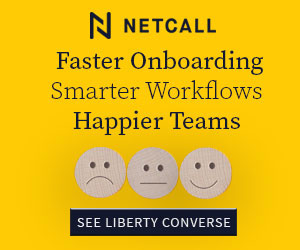We asked our panel of experts for their best advice on how to handle frustrated customers and end these interactions on a positive note.
What Is a Frustrated Customer?
A frustrated customer is a frustrated person who has had a negative emotional response to a service or company, which has resulted in them feeling annoyed, disappointed or upset at the perceived resistance to their objective or experience.
This frustration can be caused by numerous factors, but generally results from a negative experience with an aspect of the service they received, for example being unable to find the answers they want, product issues, delivery problems, or service shortfalls.
These customers generally want to be heard, understood and helped.
Customer frustration can quickly turn to customer anger if it is not dealt with promptly and effectively.
How to Handle Frustrated Customers
These are our experts’ top tips for how do you handle problems with customers and deal with frustrated customers and make them happy:
Be Authentic and Acknowledge the Customer’s Concerns
Frustration is often rooted in negative experiences, for example when a process or product has not met the customer’s expectations.
Taking time to understand the situation does more than simply validate a customer’s feelings. It helps collect information that is crucial to highlight a pain point that needs addressing.
Everyone has heard half-hearted apologies or scripted answers which avoid admitting liability, and these tend to increase frustration… When this happens, customers can feel like they are being managed as the problem rather than helped!
Empathy, clear communication and using an appropriate tone help convey an authentic response. When an agent then follows this up with appropriate problem solving and solutions to address the customer’s concerns, even negative experiences can have positive outcomes.
Have Specialized Agents

Even the most experienced agent can be caught off guard by the tone or intensity of a customer. However, meeting ‘fire with fire’ turns conversations into confrontations and escalates the situation further.
The most irate, rude or even aggressive customers can go on to spread a lot of negative publicity.
These situations can be especially challenging so it’s beneficial to have agents who are specifically trained for these more high-intensity interactions and receive the support and understanding they need to handle the stress.
Advanced call qualification, possibly enhanced by sentiment analysis, can help get these customers to specialized agents and avoid stoking the situation further with transfers and delays.
Address the Problem Immediately
Sometimes frustration develops out of a series of unfortunate events. It may well be appropriate to investigate a situation, but that is probably not what a customer actually wants right now. They want resolution, such as missing goods to be delivered, an engineer to conduct repairs or a refund.
Empowered, well-trained agents with access to real-time histories and the right tools can be more confident and ultimately better equipped to make a first step towards resolution.
Ill-prepared agents can inadvertently provoke the situation even with their best efforts. Putting them on hold, transferring the call or maintaining silence while the agent checks the history may well be helpful but do not offer the immediate response customers crave.
Once the first step has been taken, a callback or transfer may be appropriate in complex cases, but always try to make that first step the first time.
Contributed by: Steven Owens at Odigo
Challenge Broken Processes

Reducing failure demand lowers the number of angry contacts that contact centres receive. Yet, because they are continually firefighting and data is in silos, many leaders find it challenging to stop failure demand and ease pressure.
Creating breathing space is crucial. Then leaders can assess demand drivers. On its own, disposition data doesn’t give the full picture.
By harnessing speech, text and desktop analytics, leaders can create a clear picture of their top contact reasons and what systems agents use to solve them, carry out root cause analysis and put a price tag against each.
The technology may also analyse each contact reason and establish trends in customer responses, for example expressions of negative sentiment, risk of complaint or churn. This enables leaders to pinpoint the broken processes that drive this type of demand.
Some problems the contact centre may be able to fix downstream. Others will require the support of another department upstream to overcome issues, while many need a policy change that merits board intervention.
By sharing the price tags for those outside of the contact centre’s control, other departments and the c-suite are more likely to act as the benefit becomes obvious.
Contributed by: Ed Creasey at Calabrio
Listen to and Support the Customer

When customers feel like they’re not being listened to, frustration is often the first feeling that arises. By ensuring your teams are listening to the customer without interruption, you’re more likely to be able to defuse the situation and solve the customer’s problem.
Dealing with angry customers is tough at the best of times, but it’s made even more difficult if you don’t have the right support tools in place to help.
Once the customer’s frustration has been understood, clear guidelines and policies for your staff to turn to is vital to change the dissatisfied into satisfied customers. This will also help to align your team’s responses so complaints are dealt with consistently.
In most cases, customers are looking for clarity, so having clear processes in place will provide a quality customer experience and reduce frustrations.
Contributed by: Sean McIver at MaxContact.
Foster a Culture of Connection
Negative experiences trigger frustration, but customer and agent friction is avoidable. Creating a positive customer experience starts with your agent experience. If your agents are burned out, your customer experience will have the same burned-out feeling.
Give your agents flexibility and control over work/life balance, easy and immediate access to answers they don’t already know and help them build quality relationships.
Foster a culture of connection beginning at onboarding and keep them engaged by recognizing and committing to their sense of purpose.
If you neglect the agent experience, and the burned-out ambassadors of your brand hate their job, imagine the message they’re broadcasting to customers.
If you treat your employees like your customers, they will, in turn, be able to create a positive customer experience when contacting your company.
Support Your Agents

Suppose a customer has had a negative experience and is contacting your company. In that case, it is up to your agent to save that customer and make sure their experience with your company ends on a positive note.
Good soft-skill behaviours are the secret to turning that negative customer experience into a positive one. How can you ensure your agent is experienced in soft skills?
Providing your agents with easy-to-understand, automated and contextual visual insights on their screen that offer information relevant to the conversation provides consistent coaching reinforcement so agents can proactively work to improve their service levels on every customer interaction.
The same real-time methods should be measured post-interaction and delivered in easy-to-read dashboards for agents to review their own high- and low-scoring behaviours. This provides the agent with continuous, focused, and measured improvement and, in turn, results in your customers having their issues resolved on the first contact.
Contributed by: Tyler Butterfield at NiCE
Be Kind and Help Find a Solution

When customers have a negative experience with a brand, such as when a service or product doesn’t deliver as expected or something goes wrong with their bill, the contact centre or customer service centre is often the first place they go to complain.
Agents are on the front lines of having to handle that frustration, and their actions can often mean the difference between a customer who churns and one who doesn’t.
One of the best ways to de-escalate a situation with a frustrated customer is to first show kindness and express empathy – make it clear that you understand why they’re frustrated and that you’re sorry for the experience. From there, take ownership and focus on finding a solution.
Phrases such as “Let’s get that fixed for you” or “Let’s make sure that doesn’t happen again” show that you’re more than just apologetic.
Empathy and ownership together prove your organization is committed to delivering the best customer experience possible now and in the future.
Contributed by: Frank Sherlock at CallMiner
Remain Calm, Personable and Positive

It can be all too easy to mirror a frustrated person’s tone of voice when faced with a disgruntled customer over the phone.
However, a conversation will be much more productive if the team member assisting remains calm and focused on resolving the issue.
Adding a personal touch to interactions by using the customer’s name every now and then helps to show you care and that you respect them. Be careful not to overuse their name, though, as this can seem forced.
Always remind agents that customer frustrations aren’t personal to them. It’s important to stay objective, as taking complaints personally can negatively affect morale and quality of work.
Defusing a situation by remaining professional and showing empathy is the best way to turn a negative customer experience into a positive.
Contributed by: Drew Naylor at MaxContact.
Speed It Up a Bit
In a new global economy characterized by shipping delays, higher prices and unexpected roadblocks, expediency can be a breath of fresh air.
A frustrated customer that doesn’t have to wait for manager approval or speak to a supervisor can easily find value in the speed and efficiency with which your organization can solve problems.
If your organization and your workforce management (WFM) system can quickly match a frustrated customer with a highly skilled problem solver, you can streamline resources in order to give your customers a faster version of what they were expecting.
Expediency is a simple and effective way to provide good customer service and repair significant damage done. Live agents who are highly specialized and extremely agile can make an immediate impact in reducing call and complaint volume.
Your WFM and learning capabilities should ensure that everyone involved in customer contact operations, from the front lines to administration, has the solution knowledge and resources they need – when they need them – to support continuous delivery of a consistent, exceptional customer experience.
Acknowledge It, Then Put a Value on It

One of easiest ways to deal with a frustrated customer is to put a value on their time and frustration. Some customers may go right to a number that they want to be compensated and others may simply expect you to do it for them.
Servicing frustrated customers by simply offering monetary compensation is fraught with problems. Compensation relative to services expected or received is a conversation worth having.
Businesses and agents that can turn a refund exercise into a value proposition will see higher retention rates and prevent future frustrations.
In addition to these strategies, it’s important to remember that technology is also playing a role in improving CX and dealing with frustrated customers.
Many companies are finding that customer experience has improved when using proactive notifications to better keep customers in the loop, while giving them every opportunity to report an issue.
Contributed by: Jennifer Hughes at Alvaria
Don’t Make the Situation Worse

Listening to endless menus and hold music is always frustrating, but if you have a difficult issue or problem and just need to speak to someone, this experience quickly moves from being tolerable to very stressful!
Critical to dealing with an already upset caller is not to make the situation worse.
- Use natural language interfaces to quickly identify angry or annoyed callers by listening for keywords or analysing the tone of their voice.
- Predict ‘problem’ calls using customer data (multiple calls that day, an unresolved complaint, or a missed delivery).
- Make sure the agent has all the information to hand when the call is answered, so they don’t need to ask the customer to repeat anything.
If prioritized and handled well, customers will often forgive the initial frustration, even turning to see the experience in a positive light if resolved quickly and efficiently.
Contributed by: Angela Lepelley at Five9
Remove Friction From Customer Journeys

Customers want their experiences with contact centres to be low-effort and uncomplicated.
A bad customer journey can be a root cause to customer frustration, causing problems for the customer and the organization.
The key to creating a frictionless customer journey is to first understand the journey and map it out. According to research by Forrester, 95% of consumers use three or more channels in a single customer service interaction, with 62% using multiple devices.
With more customers expecting organizations to interact through digital channels, having an omnichannel approach to serve a variety of customer needs is vital.
Be clear on how customers can complain to remove any further pain points. If your customer wants to complain but can’t find the right channel to do so, it’ll only cause more frustrations and potentially lead to a worse complaint.
Contributed by: Ben Booth at MaxContact
Enable Customers to Find the Answers Themselves

The majority of customers today prefer to find the answers to their queries themselves and will not accept dealing with a chatbot that doesn’t give the answers they seek.
Nor will they accept being bounced around a contact centre after thirty minutes of waiting following an unsuccessful self-service attempt.
Providing self-service solutions will reduce frustration among customers who would be able to solve their issues autonomously, increase customer satisfaction and business efficiency.
Contributed by: Laura Bassett at NiCE
Make Sure the Customer Feels Heard

Acknowledge, apologize, and find a solution. Your agents need to put themselves in the customer’s shoes. How would you want to be treated if you were on the other end of the call?
Listen to everything that the person has to say, make notes of key points, and allow them to finish what they are saying.
If you don’t let them finish what they are saying, they’ll not feel they’ve been listened to, and you’ll not be able to defuse the situation.
Most people practise what they are going to say without even realizing that’s what they are doing while waiting to get through.
Once they have finished what they need to say, it is important to acknowledge the points made and then look at the things you can resolve quickly. Small quick wins can lead to the customer trusting you and can often defuse the frustration and ensure that they’re leaving the call happy.
Contributed by: Claire Benbow at Sensée
Read these articles next to discover more great insights from our panel of experts:
- 16 Key Components of a Digital Customer Transformation Strategy
- 12 Shift-Planning Techniques
- What Should You Put in a Customer Service Vision Statement?
- What Are the Main Call Centre Pain Points, and How Can They Be Solved?
Author: Charlie Mitchell
Reviewed by: Hannah Swankie
Published On: 18th Apr 2022 - Last modified: 13th Oct 2025
Read more about - Customer Service Strategy, Alvaria, Angry Customers, Ben Booth, Calabrio, CallMiner, Drew Naylor, Ed Creasey, Editor's Picks, Five9, Frank Sherlock, Handling Customers, Laura Bassett, MaxContact, NiCE, NiCE CXone, Odigo, Sean McIver, Sensee, Service Strategy








































